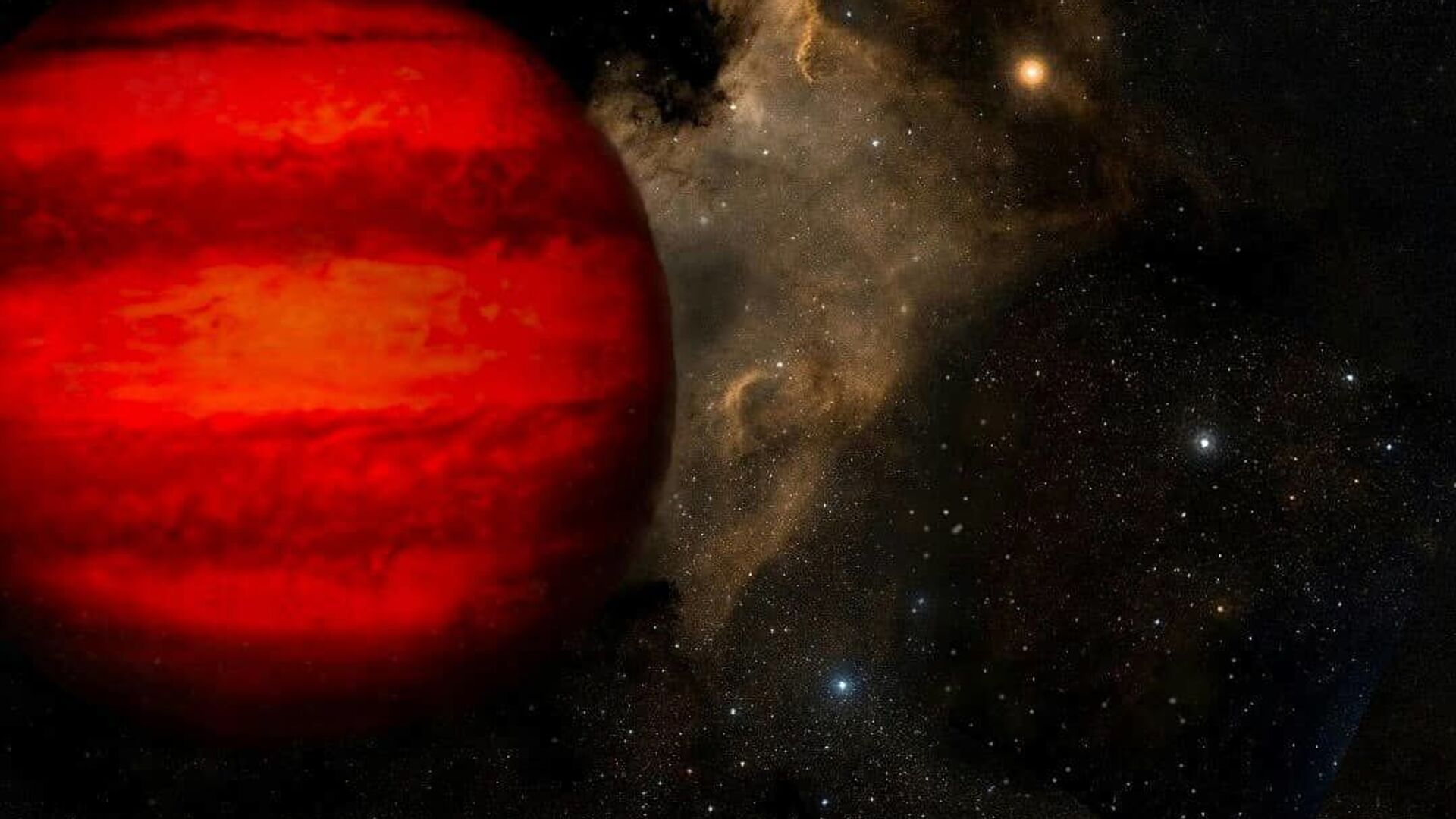https://sputnikglobe.com/20230620/scientists-discover-universes-hottest-object---and-its-not-the-sun-1111309098.html
Scientists Discover Universe’s Hottest Object - And It’s Not the Sun
Scientists Discover Universe’s Hottest Object - And It’s Not the Sun
Sputnik International
A brown dwarf has been discovered to be almost twice as hot as the sun which Earth rotates around.
2023-06-20T01:46+0000
2023-06-20T01:46+0000
2023-06-20T17:11+0000
beyond politics
science & tech
space
brown dwarf
sun
space exploration
https://cdn1.img.sputnikglobe.com/img/07e4/07/0b/1079856873_0:5:1080:613_1920x0_80_0_0_7ea17da5972056bff356d6eee622132d.jpg
New findings by an international team of researchers recently revealed the scorching discovery of a brown dwarf that far eclipses the level of heat emitted by the sun.Sitting 1,400 light-years from Earth, the brown dwarf has since been named WD0032-317B. It was discovered by a team led by astrophysicist Na’ama Hallakoun from the Weizmann Institute of Science in Israel.The brown dwarf has an orbit that is so close to its host star, that it maintains a temperature above 8,000 Kelvin (7,727 degrees Celsius, or 13,940 Fahrenheit), which officials note is "hot enough to break apart the molecules in its atmosphere into their composite atoms." For comparison, the temperature of the sun is 5,778 Kelvin.What makes this particular brown dwarf even more interesting is that while brown dwarfs do burn hotter than planets, officials say they typically burn cooler than the coolest red dwarf stars, as they are unable to reach hot temperatures on their own.In addition to the exciting discovery of such an abnormally hot object, the team of astronomers have stated the brown dwarf may be able to give scientists a better understanding of the planet Jupiter, as well as other gas giants orbiting hot, massive stars that are difficult to study on their own due to the activity and rotation rates of the stars.
Sputnik International
feedback@sputniknews.com
+74956456601
MIA „Rossiya Segodnya“
2023
News
en_EN
Sputnik International
feedback@sputniknews.com
+74956456601
MIA „Rossiya Segodnya“
Sputnik International
feedback@sputniknews.com
+74956456601
MIA „Rossiya Segodnya“
science, space, brown dwarf, planet, jupiter
science, space, brown dwarf, planet, jupiter
Scientists Discover Universe’s Hottest Object - And It’s Not the Sun
01:46 GMT 20.06.2023 (Updated: 17:11 GMT 20.06.2023) Brown dwarfs have masses that range between a giant planet like Jupiter, and small stars, more specifically the substellar objects, which are neither planets nor stars, and can have 13 times to 80 times the mass of the planet Jupiter.
New findings by an international team of researchers recently revealed the scorching discovery of a brown dwarf that far eclipses the level of heat emitted by the sun.
Sitting 1,400 light-years from Earth, the
brown dwarf has since been named WD0032-317B. It was discovered by a team led by astrophysicist Na’ama Hallakoun from the Weizmann Institute of Science in Israel.
The brown dwarf has an orbit that is so close to its host star, that it maintains a temperature above 8,000 Kelvin (7,727 degrees Celsius, or 13,940 Fahrenheit), which officials note is "hot enough to break apart the molecules in its atmosphere into their composite atoms."
For comparison, the temperature of the sun is 5,778 Kelvin.
In the past the US space agency NASA has described brown dwarfs as "failed" small, low-mass stars that are the “missing link between gas giant planets."
The celestial bodies often prove difficult to zero in on as they emit low light and energy levels; in fact, they went largely undetected until the late 1980s.
What makes this particular brown dwarf even more interesting is that while brown dwarfs do burn hotter than planets, officials say they typically burn cooler than the coolest red dwarf stars, as they are unable to reach hot temperatures on their own.
In addition to the exciting discovery of such an abnormally hot object, the team of astronomers have stated the brown dwarf may be able to give scientists a better understanding of the planet Jupiter, as well as other gas giants orbiting hot, massive stars that are difficult to study on their own due to the activity and rotation rates of the stars.


